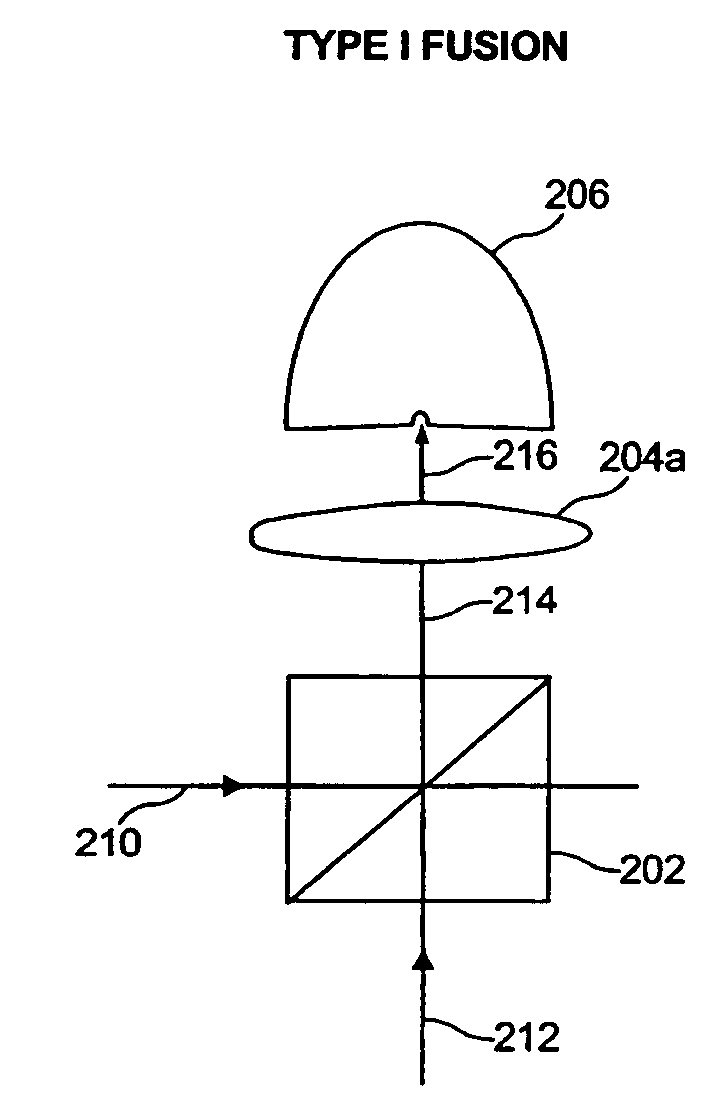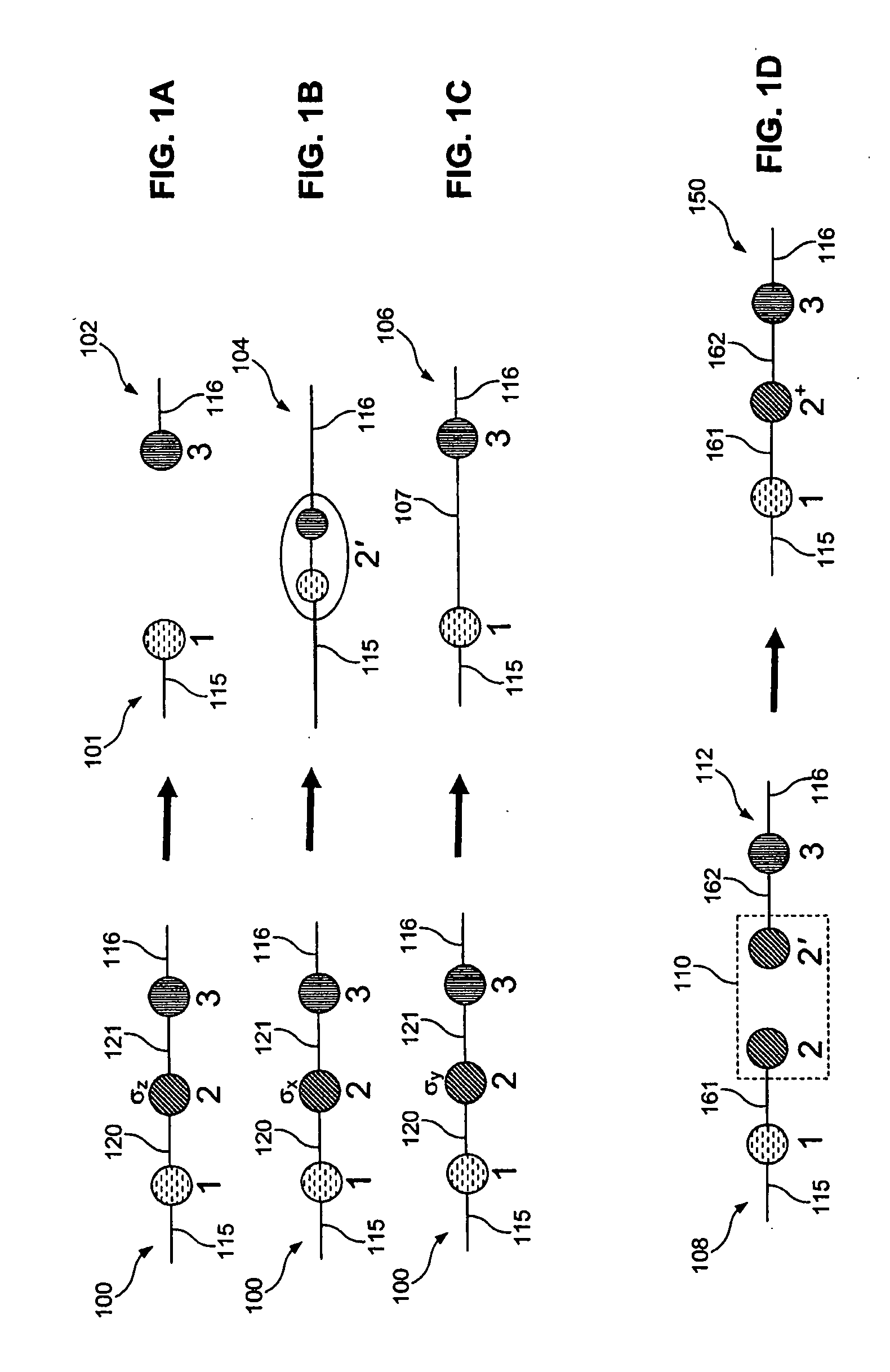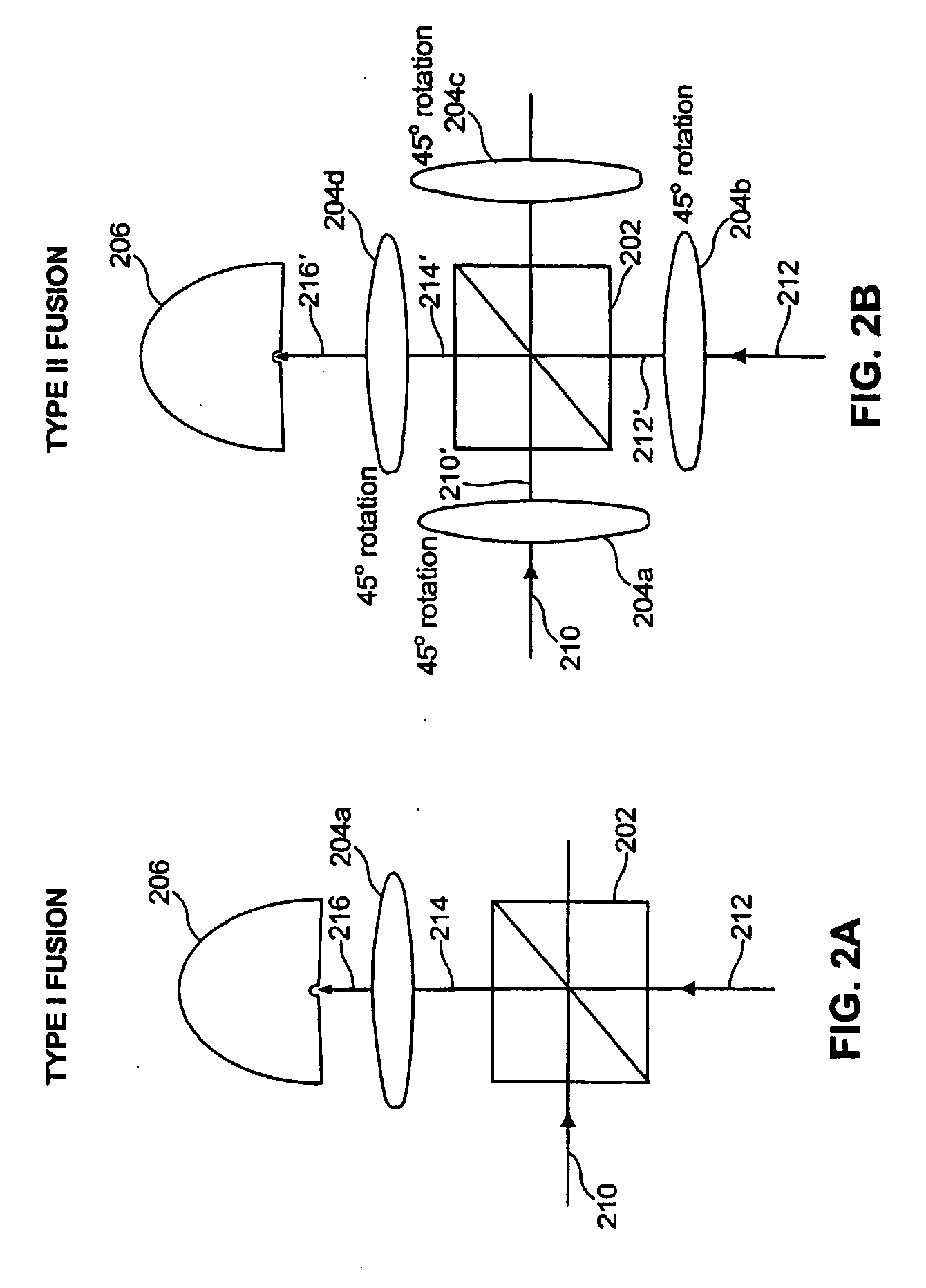Efficient construction of quantum computatitonal clusters
- Summary
- Abstract
- Description
- Claims
- Application Information
AI Technical Summary
Benefits of technology
Problems solved by technology
Method used
Image
Examples
Embodiment Construction
Table of Contents
I. Overview
[0030]A. Unitaries and Graph States in Universal QC
[0031]B. Single-Qubit Measurement and Fusion of Cluster States
II. Formation of Example Two-Dimensional Basic Clusters
[0032]A. Formation of L-Shape
[0033]B. Formation of Cross-Shape
[0034]C. Formation of Sideways H-Shape
III. Formation of Larger Arbitrarily-Shaped Clusters
IV. Conclusion
I. Overview
[0035]While specific configurations and arrangements are discussed, it should be understood that this is done for illustrative purposes only. A person skilled in the relevant art will recognize that other configurations and arrangements can be used without departing from the spirit and scope of the present invention. It will be apparent to a person skilled in the relevant art that this invention can also be employed in a variety of other applications.
A. Unitaries and Graph States in Universal Quantum Computation
[0036]A universal computer comprises a universal set of logic gates capable of handling an all-inclusive se...
PUM
 Login to View More
Login to View More Abstract
Description
Claims
Application Information
 Login to View More
Login to View More - R&D
- Intellectual Property
- Life Sciences
- Materials
- Tech Scout
- Unparalleled Data Quality
- Higher Quality Content
- 60% Fewer Hallucinations
Browse by: Latest US Patents, China's latest patents, Technical Efficacy Thesaurus, Application Domain, Technology Topic, Popular Technical Reports.
© 2025 PatSnap. All rights reserved.Legal|Privacy policy|Modern Slavery Act Transparency Statement|Sitemap|About US| Contact US: help@patsnap.com



